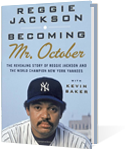Why managers should learn to stop
worrying and love unions.
Henry Ford, prototypical American garage inventor, model for all maverick CEOs since, was caught between two seemingly irreconcilable economic forces during the first, meteoric years of his company’s growth.
His swift assembly lines had slashed the price of a Model-T from $825 in 1909 to a mere $440 by 1914, and he would soon reduce the price even more with innovations like cash rebates.
The problem was that the only way the company could support its narrow profit margins was to sell to an ever-expanding market, and $440 was still a high price for most Americans.
Ford realized that in a modern, mass-market economy, the people who make stuff are the same as the people who buy stuff. If you paid them more, they’d buy more. The economy would grow, and everybody would profit. Yet, as any manager will tell you, wages are one of the most significant costs of running a business. If you pay more, your profits are reduced. You run the real risk of being put out of business by leaner competitors. But Ford had a unique advantage. He already controlled about half of the auto industry, which gave him freedom to make a bold move. Instead of trying to push his costs still lower, he would single-handedly pull his workers’ buying power up.
Ford announced that he would nearly double the minimum salary paid to his 13,600 workers to $5 a day, and reduce the workday from nine hours to eight. In a stroke, he transformed the people who manufacture automobiles into the people who buy them.
“The right price is not what the traffic will bear, and the right wage is not the lowest sum a man will work for,” Ford said. “The right price is the lowest price an article can be steadily sold for. The right wage is the highest wage the purchaser can steadily pay.”
The reaction from business thinkers was generally negative. “He’s crazy, isn’t he?” asked Adolph Ochs, publisher of the New York Times, when he heard about Ford’s plan; the Times promptly denounced the $5 day as “distinctly utopian” and “foredoomed to failure.” The Wall Street Journal went even further, accusing Ford of having “committed economic blunders, if not crimes” and applying “spiritual principles where they don’t belong.”
And it wasn’t just the media. “It ought to tickle the socialists nearly to death,” remarked the head of competing Chalmers Automobile Company. Yet a mass meeting of Detroit socialists replied that it was all “an abominable trap. By the raise of a few dollars a week, Ford has purchased the brains, life and soul of his men.” Ford, as it would turn out, was crazy. In the years to come, he would fund a puerile, anti-Semitic newspaper; indulge in his obsessive love of folk dancing and, in the end, nearly ruin his company by slashing his workers’ wages.
But he was not crazy for giving his workers a raise in 1914. As Ford later recalled, “The payment of $5 a day for an eight-hour day was one of the finest cost-cutting moves we ever made.”
The better pay and shorter hours reduced Ford’s previously high turnover rate and created intense company loyalty. It is not known just how many Ford workers used their new disposable incomes to buy Ford cars. But property owned by Ford workers, measured in bank accounts and real estate holdings, went from an average worth of $196 in 1914, when the $5 day began, to $750 by 1916.
And, far from providing competitors a bottom-line advantage, Ford’s move drove pay up throughout the rising auto industry and sent further ripples through the rest of Michigan and the United States. Overnight, the raise and the eight-hour day created a ready-made buying public for the Model T, one with a nearly middle-class income and time to dispose of it.
Even better for Ford stockholders, in the two years that followed the pay hike, Ford Motor Co. nearly doubled its profits.
And so we arrive at Ford’s paradox. Henry Ford could arbitrarily change the rules. It is doubtful that any present CEO—with the possible exception of Bill Gates—could do the same. Again, managers are usually obliged to push wages down. If they don’t, their competitors will do so and eventually drive them out of business. The paradox, of course, is that since no single business can make the first move toward increasing wages, the market as a whole cannot raise wages. And yet if the market as a whole does not raise wages, no single business can prosper in the long run.
Resolving this paradox is now more relevant than ever as real wages continue to stagnate. (See “A Big Pie, Sliced Thin.”) Workers—even new-economy workers, as the Verizon strike readily demonstrates—are increasingly unsettled, and this fall’s election has seen more and more, as Gov. George W. Bush likes to call it, “class warfare.” Luckily, managers don’t have to solve Ford’s paradox themselves. They have an existing entity, an “old-technology” institution tempered through years of hard times, that can solve it for them. I am referring, of course, to unions.
Let us all perform our genuflection to the market right now. As we all know, the introduction of digital technology into the economy has not just led to a host of nifty new consumer products. It also has driven exponentially efficient innovations in production, changes that by comparison make the original Ford assembly line appear blunt and unimaginative—changes that, in many ways, have improved the lives of millions of people. We are relentlessly inventing new ways to make everything cheaper, better, faster.
Which is precisely the problem. Think of today’s market-driven economy as a sort of superefficient, jet-powered, futuristic Ford—without a driver. That is to say, a wonderful machine that is likely to go right over the next cliff.
With one business after another primed to seek out the cheapest labor anywhere, our new, superefficient economy is innately deflationary. Without someone or some mechanism in the driver’s seat to keep spending power up, we may well be on the way to a global economy that churns out incredibly cheap, highly efficient goods that no one can afford to buy.
Just look at the figures. Even with unemployment at its lowest point in three decades and personal income in the United States growing steadily over the last year, spending rose at twice the level of income. As of July (2000), the national savings rate had fallen to a record low, at minus 0.2 percent of income. That is the lowest savings rate since the U.S. Department of Commerce started tracking the figures in 1959.
In other words, consumers are buying a lot more stuff despite the fact that they aren’t earning all that much more. Is this magic? No. Instead, they are relying more than ever on home equity loans or credit cards to fund their buying sprees.
The wisdom of our contentment holds that this probably can go on more or less forever. All we need is the right leadership, to properly balance our “golden triangle” of increased productivity, steady wages and low interest rates.
But there is an obvious limit to this sort of plastic spending. One can only mortgage one’s home every so often, and even credit card companies insist upon getting paid eventually. And beneath these surface shifts of American earning and spending, there are even more alarming rumbles in our society. As has been remarked upon before, we seem to be splitting into two economic Americas. One, the relatively small high-tech nation, is making money hand over fist. The other, much broader nation, is made up of families who have seen their earnings essentially stagnate for over 30 years now, their dreams diminish and their working hours dramatically increase just to keep their heads above water. These are not people who will buy your products and services in the near future.
So what should concerned managers do? Double everyone’s salaries tomorrow, a la Henry Ford? Of course not. But maybe we should consider that, in a world of market forces gone berserk, the best solution to Ford’s paradox can be found outside the market. In the new economy, we have seen a once-complex system of checks and balances between the needs of workers, capital and democracy reduced to a single goal of market efficiency. That goal may seem at first to be a good one. And, in the short term, it is. It is also elegant, easy to emulate, loaded with opportunity, the engine of massive economic growth and many other things we can all be proud of.
Markets do many wonderful things. But a force as powerful as a free market needs other, equally powerful, forces to keep it from driving over the aforementioned cliff. This does not mean some guy over in Washington yanking the prime rate up or down a quarter-point every so often, or some eccentric genius—whether he’s in Detroit or Seattle—deigning to up his workers’ pay.
What we need is a real golden triangle, some new set of forces that once set in place will serve to keep the economy gliding along. That is, something we used to have when we had strong, effective unions in this country.
Back in the old days of capitalism, around the last turn of the century, America’s brand new corporate giants were the wonder of the world. Largely unhindered by taxes, government regulations—or above all unions—corporations grew and grew and grew. Except, that is, every seven years or so, when the country would suffer a devastating economic downturn deeper than any depression we have endured since the 1930s. Millions of people would be thrown out of work, thousands of promising new businesses would close and hundreds of once-sound banks would shut down. These terrible downturns weren’t just freak occurrences. They were a regular part of the business cycle. Then, as now, the market system was transforming America and the world, day-in and day-out, often in astonishing ways. But like any other human system that is left untended, the marketplace ran out of control. In fact, the uncontrolled market became its own worst enemy. The biggest cartels and monopolies crushed smaller companies. They manipulated stock prices and scared millions of middle-class Americans away from Wall Street.
Worst of all, big corporations forced down wages, often through violent means and with the help of state power. Working men and women lost faith in the market, and turned to increasingly class-conscious critiques of capitalism. In the years leading to World War I, they elected thousands of socialists to public office and joined radical unions such as the International Workers of the World, which believed in using general strikes and sabotage as legitimate weapons of class warfare.
In response, progressives proposed a host of reforms that proved both more and less successful. These included everything from basic, practical regulations for inspecting meat and improving working conditions to enforcing antitrust laws. It also included Teddy Roosevelt’s idea for a “New Nationalism” that would have essentially accepted industrial monopoly—under the supervision of even bigger and more intrusive government.
Ironically, the unions themselves generally opposed this last solution. Samuel Gompers, the American Federation of Labor’s longtime president, was especially suspicious of any government regulation of industry-labor relations, arguing that a government that could grant nearly everything could also take it away. Gompers’ point was well taken when management—again abetted by local and federal governments—all but finished off the unions in a series of showdowns soon after World War I.
The 1920s was an era with obvious parallels to our own time. With nothing to stand in their way, American corporations brought forth a period of rapid technological innovation. Television, radio, air travel, numerous modern building and shipping techniques, household appliances such as vacuum cleaners and refrigerators—and yes, automobiles—were either invented or came into their own before the decade was over, opening vast fields of endeavor and employment opportunity. At which point the economy completely melted down.
What followed was worse than ever, a period of worldwide depression and turmoil, and eventually a war that came close to ending civilization.
What happened? Debates about what caused the Great Depression still rage, but one thing seems clear: American consumers could no longer buy enough of all these great new things to keep the good times rolling—and they didn’t have much access to credit cards or home equity loans.
Consider: While industrial output between 1923 and 1929 rose by 40 percent in the United States and corporate profits increased by 80 percent, industrial wages went up only 8 percent. Between 1921 and 1929, meanwhile, personal debt in the U.S. more than doubled, going from $3.1 billion to $6.9 billion. Sound familiar?
The short-term solution to the Great Depression proved, unfortunately, to be World War II, jump-starting the Western economies through massive government spending. The longer-term solution, though, was the series of wide-ranging reforms that came out of the second New Deal. And at the heart of these reforms was the 1935 Wagner Act, the first federal law to guarantee unions the right to organize.
The Wagner Act enabled laborers for the first time to have something resembling parity in negotiating with management. But the right to organize was not the same thing as actually organizing millions of workers. And before the 1930s were out, industry had waged extended—often physically violent—battles to keep out the unions, and engaged in even more apocalyptic rhetoric.
“Labor unions are part of the exploitation scheme,” an aging Ford insisted, handing labor negotiations over to the head of the Ford Service Department. “The men probably don’t know it, and maybe their leaders don’t even know, that they are really but tools in the hands of the master exploiters.”
Yet those business giants that largely acquiesced to their workers’ organizing efforts—such as U.S. Steel and Chrysler—made out just fine. Those that fought the unions hardest—most notably Ford, where Henry Ford had to be forcibly retired by his grandson before he finished off the company—ended up disrupting their plants and wasting small fortunes on company goons and weapons.
The rise of the unions ushered in a period of prosperity and relative cooperation that lasted into the 1970s. This was the real golden triangle, with government serving as a sort of arbiter, curbing the excesses of labor and business, while liberally dispensing goodies to both.
The whole arrangement proved, for the most part, to be hugely successful. It was no coincidence that, as the organized workforce reached a record 35 percent in the late 1950s, the United States approached new heights of deep, sustained prosperity. Business cycles and periodic recessions were not banished, but they were never as extended, as damaging or as frequent as the depressions that had once regularly wracked the nation. Millions of working-class Americans found new routes to the middle class and beyond. Class solidarity faded and unions made key contributions to winning both World War II and the Cold War, as the AFL-CIO lent a crucial hand against communist domination of labor unions in postwar Western Europe.
No golden age passes without reason. The golden triangle was held together partly by Cold War discipline, and once that waned and cracked apart over Vietnam, the balance of power began to disintegrate. The unions themselves came to ossify, and critics from both the left and right launched effective assaults on big government. Buffeted by the oil crises of the 1970s and sweeping industrial changes, the golden triangle finally collapsed. What took its place was something of an economic roller coaster. The recessions that bracketed the 1980s proved to be the worst downturns since the Great Depression. Meanwhile, real income levels stagnated for most Americans.
This does not mean we should expect anything like the Great Depression in the near future. But all of our new technology, all of our marvelous new-market efficiency, will no more sustain our current economy than all of the wonderful new technologies and efficiencies were able to sustain a mass market in 1929. Obviously, we can’t go back to some vanished golden age. Or, at least, we can never go back to the same golden age. The old smokestack industries of the ’30s and ’40s are gone—and good riddance. Even under unionized conditions, most of these jobs were nasty, brutish and interminable, polluting our air, water and bodies. Moreover, those who bemoan their loss act as if the jobs these industries generated had some inherent value—as if the position of a steelworker or a longshoreman or an assembly-line worker automatically brought with it a good, middle-class salary and benefits.
Originally, such jobs rarely paid what we would consider even a minimum wage today. They became great, blue-collar steppingstones to the middle class and beyond only when the workers who held them were able to unionize. (By the same token, why should we now think of jobs such as domestic or child-care worker as inherently low-wage ones?)
In our new, supercharged global economy, the real interests of labor and capital have converged as never before. It is, in the end, a question of scale. All the money to be gained by squeezing wages at the workplace does not compare to what is to be gained from pumping up demand in the marketplace.
The industrial economy of the past leaned toward vast industrial projects, skyscrapers, bridges, highways and dams, along with basic necessities—food, shelter, clothing. The service-and-gadget economy of today relies more than ever upon highly marginal purchases—computer software and games, vacations, entertainment, dining out—many of which are made on the spur of the moment and most of which can painlessly be dispensed with if necessary.
That is, today’s consumer must have the money and the time to make thousands of micropurchases. The economy of 1914 could be sustained by an assembly-line worker making enough to buy a Ford and a few other household items. The economy of 2000 cannot be sustained by a McDonald’s worker being able to purchase large fries and a Coke.
He must also be able to buy a couple CDs every week, maybe a DVD player, various T-shirts and nose rings—and have the opportunity to go on to some job where he can eventually buy the Ford, the high-definition TV, the hot new California wine and a Tiffany navel ring.
Today’s unions offer an effective, non-governmental institution with a vested interest in increasing buying power, peace, order and capitalism throughout the world. As such, they don’t leave the whole burden—and the risk—of keeping up purchasing power to any government, or any one person.
This does not mean that a new openness to unions—or at least the idea of unions—will mean perfect harmony in the workplace, and the advent of the peaceable kingdom here on earth. There will still be strikes; there will still be all sorts of fights and scraps over who gets what part of the pie. After all, an essential part of a market system is competition, and that is going to continue.
The question is whether we can have competition with certain rules and balances that will make the whole pie bigger. After all, most of corporate America once viewed the idea of a Federal Reserve with grave suspicion. A new role for unions in the marketplace today could play just as big a role in creating wealth and opportunity for us all. And that’s more than even Henry Ford could offer.
© Copyright The Industry Standard









